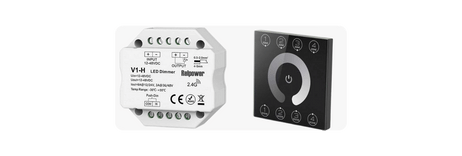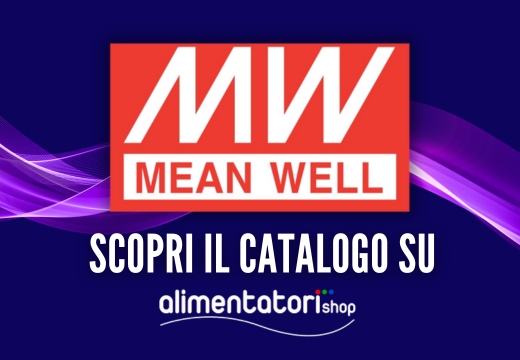In an era where various technologies evolve before our eyes, especially in recent years since the pandemic has erupted, 3C products have become items that each of us inevitably carries with us. Yet, despite continuous improvements in both performance and design, products can vary greatly from each other.
For example, the latest generation Macbooks offer Type-C ports for charging, while the Micro-B previously installed in most Android devices have now been replaced by more modern Type-C ports.
It is therefore essential to know the main characteristics of this technology to know how to distinguish the various products on the market.
What is it
With USB-C, also known as Type-C USB, we are referring to a specific connector belonging to the Universal Serial Bus (USB) interface and it is the most important and main charging port for Android devices.
The spread of this port began after the USB 3.1 and USB-PD protocols were accepted by most smartphone manufacturers starting from 2013 (with Apple following suit with the implementation of the ports on the Macbook Pro series of 2015).
Today, according to Ombia's '2021 USB Type-C Report', about 80% of notebooks and 50% of smartphones offer Type-C ports.
What are the advantages of
How was it possible that Type-C USB became so popular in such a short time? Here are some reasons for its success:
- Reversible connector: the Type-C format allows the terminal to be inserted in both directions, unlike the previous Micro-B which had a specific direction of insertion. This feature makes use significantly easier.
- Quick charging and high-speed data transfer: over time the USB-PD (USB Power Delivery) has gradually matured. Simply put, USB-PD was the solution that allowed the transition from simple charging to data transfer, with a 2-in-1 solution ready to use. Since this solution came into effect, both data transmission and charging speed have improved over time compared to the first market launches.
- Policy support: during October 2022, the European Parliament formally passed legislation for a 'common mobile charger', stating that from the end of 2024 all electronic devices sold in the EU must be equipped with a Type-C port to allow consumers greater savings and increased protection
Reading the points above, it is easy to understand why USB-C ports have become so widespread and versatile, thus allowing consumers not to have to deal with an excessive variety of cables from which to choose.
What to consider when purchasing a product
So, how can we choose the product that best suits our needs?
Different chargers, with different shapes and sizes, can confuse most people and often choices are made based on the selling price, thus leading to regret after purchase due to a lack of in-depth analysis.
In light of these considerations, here are some key points to focus on that can help the consumer make a more informed choice.
Point 1. Choose a reliable brand.
Charging a device with unqualified power supplies can lead to damage to the device itself and accidents during the charging phase. When choosing a Type-C USB product, it is essential to select a model produced by a reliable and certified brand.
Point 2. Data transfer speed.
The data transfer speed is another key point in choosing a product, and knowing the differences between products that adopt USB 2.0, 3.0, or 3.1, with respective speeds of 480Mbps, 5Gbps and 10Gbps, is at least essential in order to make the right decision, without compromising the future use of the device.
Point 3. Personal habits.
Everyone has their own habits when it comes to using a charger. For example, some may prefer to use the phone while it is charging. In such a scenario, it would be necessary to consider the right protections between the connectors and the transfer cables to always ensure a prolonged and safe use.
Furthermore, since not all products support Type-C USB, it is absolutely essential to verify the specifications of the model at the other end of the cable, so that problems do not arise during use, thus making the purchase useless and harmful.
FAQ on type chargers
What is the difference between USB PD and USB QC?
There are two types of USB for fast charging: PD and QC. The main difference is that the former reaches 100W while the latter can reach 240W. Despite this, Apple peripherals (for example) do not support QC charging. In this case it is important to avoid buying power supplies and chargers that do not offer the required performance.
What are the input and output of Type-C devices?
To date many USB Type-C chargers are labeled 100W SPR (Standard Power Range); according to the specifications of Type-C USB 2.1 released by USB-IF in 2021, the maximum power that can be delivered is 240 EPR (Extended Power Range).
The consumer, in this case, might find the wording 'EPR 240W' with the related logo on the product.

Is there an organization that certifies Type-C chargers?
Absolutely yes. A Type-C charger is treated as an independent external PSU and therefore adopts the PSU Safety Standard Certification (simply the safety certificate) under the IEC 62368. The safety standards in different regions of the world are all based on the IEC 62368 standard but with small differences. The most common certifications are UL (USA), TUV (EU), JET (Japan) and CCC (China).
Are chargers classified for power consumption in the same way as household electronic devices are?
Yes. In today's society, which values attention to the environment, achieving minimal power consumption while maintaining high performance is the main trend among all electronic devices. Excessive power consumption impacts both the environment and the devices themselves. We strongly suggest products that have a certified efficiency level DOE.
Ours
Consult our catalog products, selecting the device most suitable for your needs.











![How to choose the DC AC Inverter [GUIDA 2023] How to choose the DC AC Inverter [GUIDA 2023]](https://www.alimentatorishop.com/img/ybc_blog/post/thumb/MINIATURA-NEWS.jpg)










































![Best USB C Adapter: Buying Guide [GUIDA 2023] Best USB C Adapter: Buying Guide [GUIDA 2023]](https://www.alimentatorishop.com/img/ybc_blog/post/0a61b6ad67-BANNER-NEWS.jpg)
